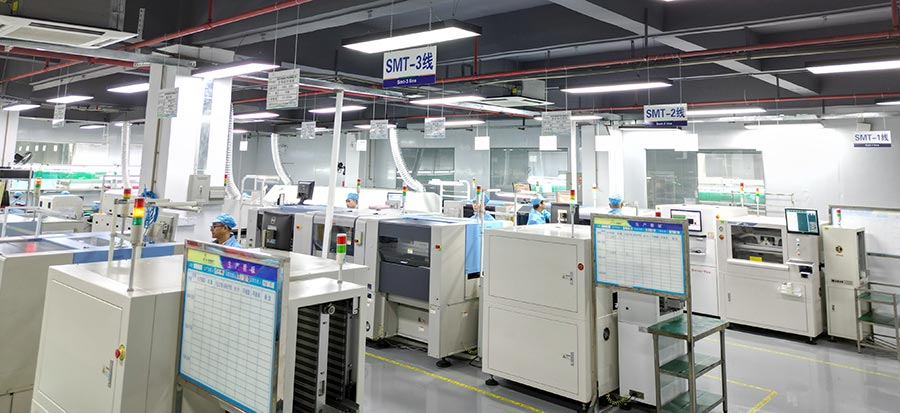Volatility in customer projects is inevitable in the PCB assembly industry. Market demand is affected by a variety of factors, such as seasonal changes, market trends, and unexpected events. How to keep the timing of production changing to adapt to these changes is key to ensuring the continued stable operation of the factory. By optimising production processes, flexibly adjusting production capacity and enhancing supply chain management, PCB assembly manufacturers are able to effectively respond to the timing of customer project changes, improve customer satisfaction and enhance competitiveness.

1、Improve production flexibility
1.1 Lean production and flexible manufacturing
PCB assembly manufacturers in the face of fluctuations in demand, the need to adopt lean production and flexible manufacturing model. Both can help manufacturers flexibly respond to production needs of different batches and complexity. Lean manufacturing improves resource efficiency by reducing waste and optimising production processes. Flexible manufacturing systems, on the other hand, allow the production line to quickly adjust to the needs of an order, whether by increasing or decreasing production or switching between different types of products.
Rapid switching of production modes: Through flexible production scheduling and intelligent production line management, manufacturers can quickly respond to changes in customer order quantities, avoiding production delays or inventory build-ups due to over- or under-capacity.
Multi-species and small-lot production: Lean production method can support multi-species and small-lot production mode to meet the diversified demands of the market.
1.2 Automated production equipment
By introducing automated production equipment, PCB assembly manufacturers can improve production efficiency and quality, and be able to flexibly adjust production schedules. In the case of large fluctuations in demand, automated equipment can switch production lines more quickly, avoiding production bottlenecks and instability caused by manual operation.
Intelligent equipment scheduling: Automated production lines combined with Internet of Things technology can monitor production progress and equipment conditions in real time, ensuring that production can be adjusted in accordance with fluctuations in demand.
Production plan optimisation: automated equipment supports a highly integrated production planning system, which can adjust the production plan in real time according to customer demand.
2、Flexible adjustment of production capacity
2.1 Capacity forecasting and planning
PCB assembly manufacturers in response to fluctuations in demand, the need for capacity forecasting based on historical data and market trends. Through data analysis and demand forecasting, manufacturers can plan production capacity in advance to ensure that they can respond to orders of different sizes.
Demand forecasting: With the help of big data analysis, PCB assembly manufacturers can accurately predict future fluctuations in market demand and plan production and material procurement in advance.
Flexible capacity planning: By working closely with suppliers and customers, manufacturers can adjust production plans according to order demand and ensure sufficient capacity to support peak production needs.
2.2 Outsourcing Production and Partner Collaboration
When faced with a sharp increase in demand, PCB assembly manufacturers can choose to outsource part of the production tasks to partners in order to quickly expand capacity. By collaborating with external vendors, manufacturers are able to mobilise external resources and increase production capacity in a short period of time.
Outsourcing co-operation: Choosing an external partner with high quality standards ensures the quality and delivery of the outsourced part of the product.
Flexible supply chain management: Through flexible supply chain management, factories can respond quickly to changes in demand and avoid production delays.
3、Optimise supply chain management
3.1 Supplier relationship management
The co-operative relationship between PCB assembly manufacturers and suppliers is crucial in responding to demand fluctuations. Manufacturers should establish long-term, stable supply chain partnerships and work with suppliers to develop contingency plans to ensure timely supply of materials and price stability.
Flexible material supply: Through co-operation with suppliers, manufacturers are able to flexibly adjust material purchases in response to fluctuations in demand, avoiding any impact on production schedules due to untimely material supply.
Advance stocking: Before the peak demand period, manufacturers can cooperate with suppliers to stock up in advance to ensure worry-free material supply.
3.2 Inventory Management Optimisation
Accurate inventory management can help PCB assembly manufacturers respond quickly to fluctuations in demand. Manufacturers can get a real-time view of inventory through an intelligent inventory management system to avoid too much or too little inventory affecting production.
Dynamic Inventory Management: Through dynamic inventory management, PCB assembly manufacturers can adjust inventory levels according to actual demand, reducing the risk of inventory backlogs and stock-outs.
Reduced inventory costs: Accurate inventory management not only helps improve deliverability, but also reduces inventory capital usage and overall operating costs.
Conclusion
Production resilience is a key factor for PCB assembly manufacturers in the face of fluctuating customer demand. Through lean production, automated equipment, outsourced production, supply chain optimisation and a variety of other means, manufacturers are able to flexibly respond to demand for orders of different sizes and complexity to ensure on-time delivery. By establishing efficient production processes and sound supply chain management, PCB assembly manufacturers are able to maintain competitiveness in uncertain market environments, meet growing customer demand, and promote long-term business development.


